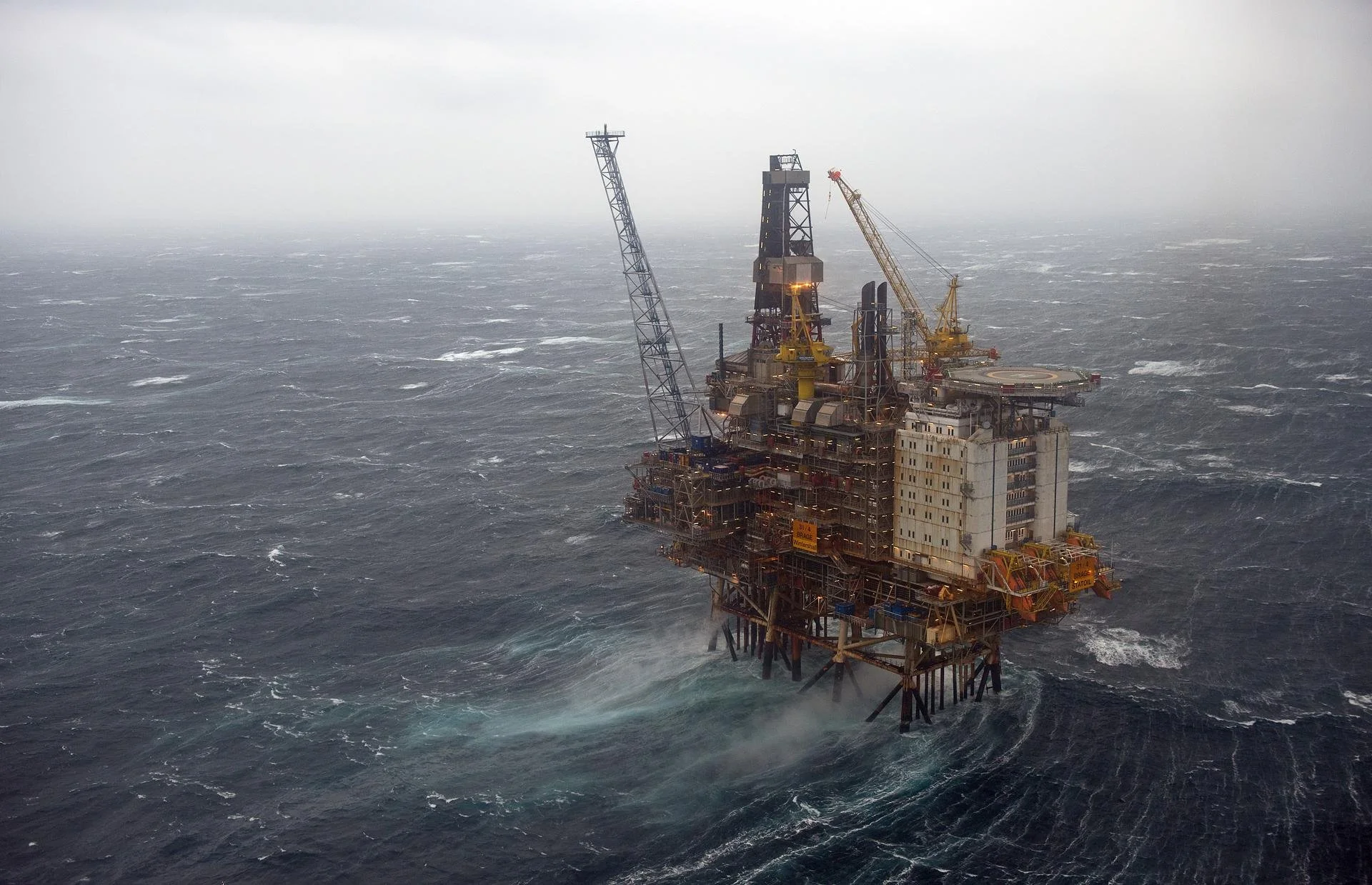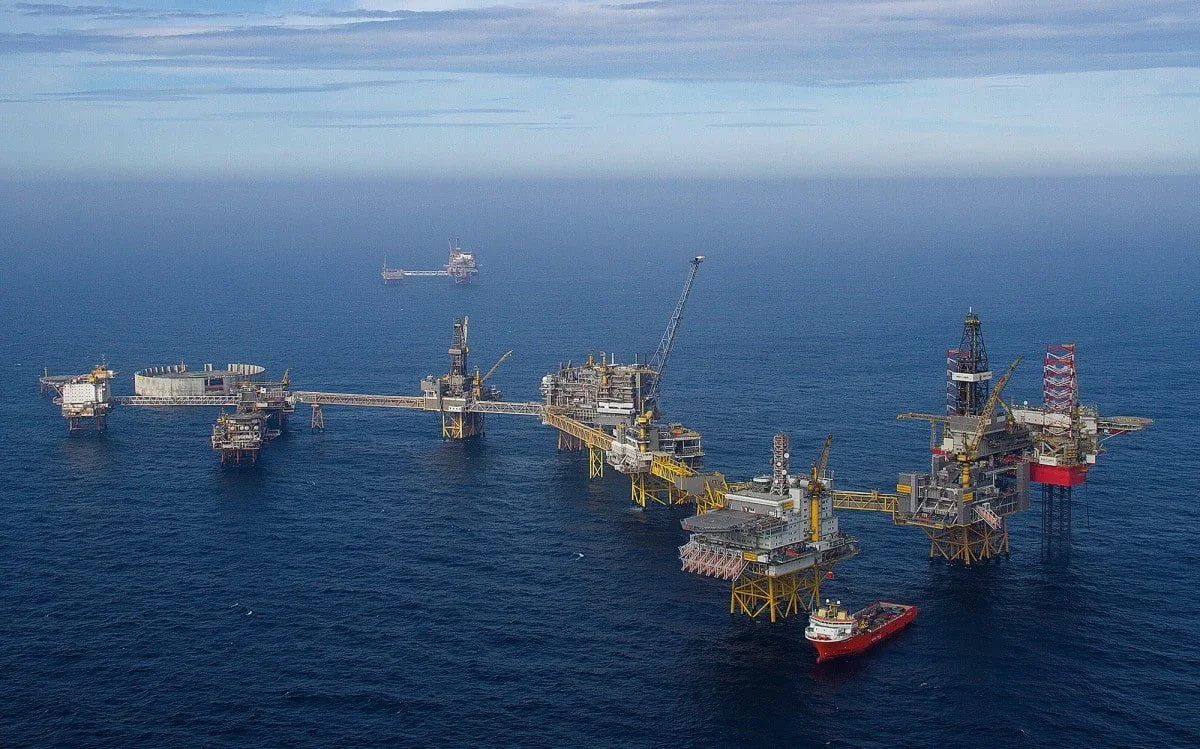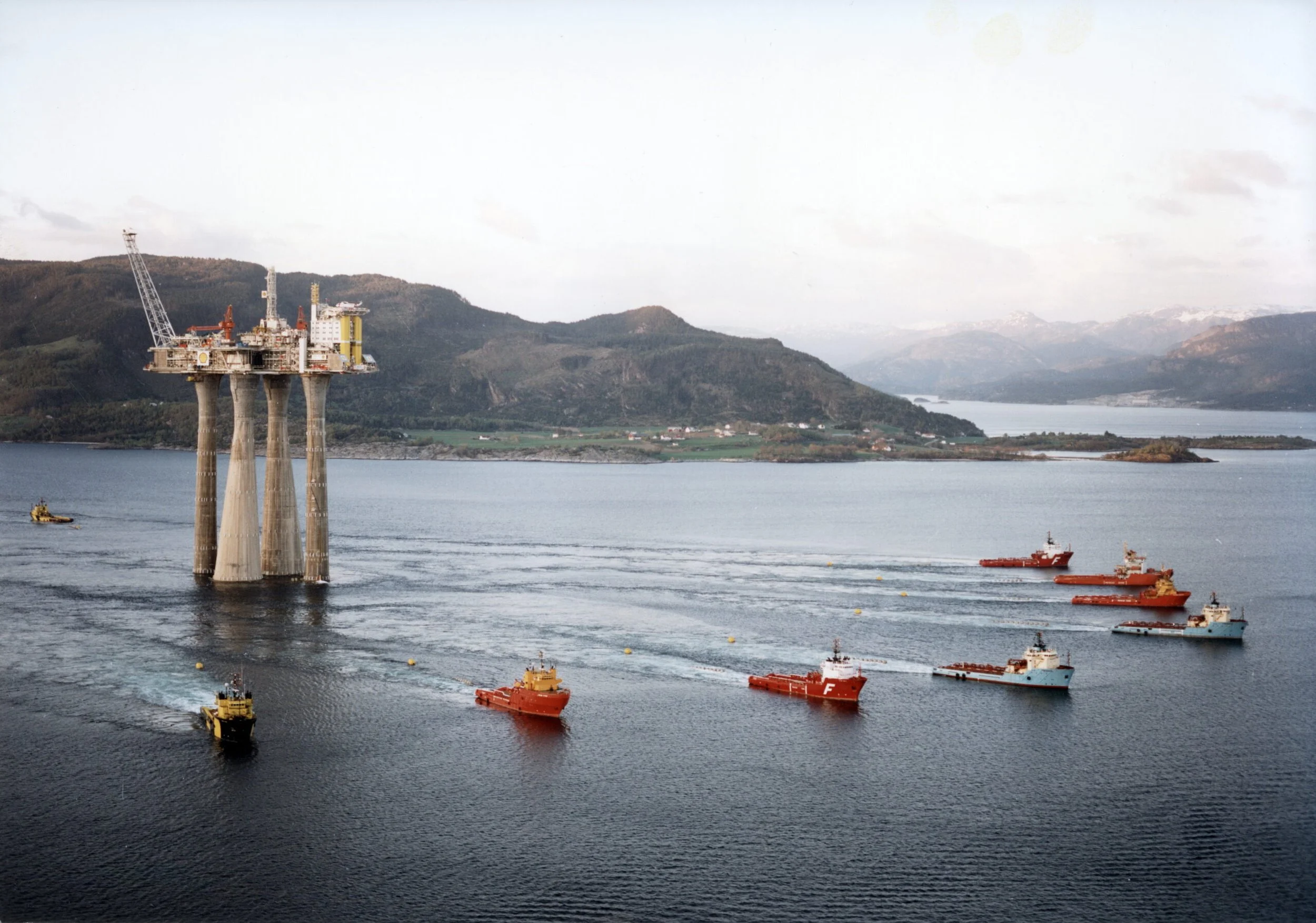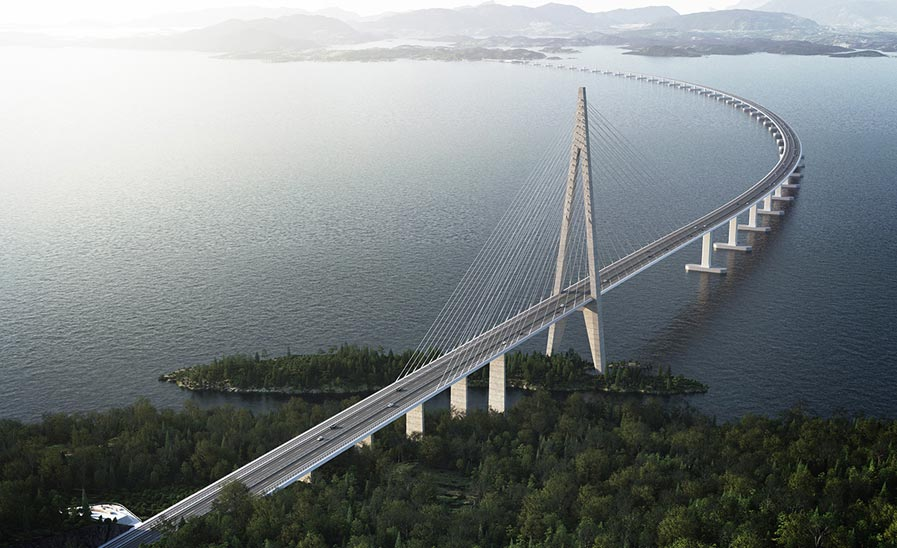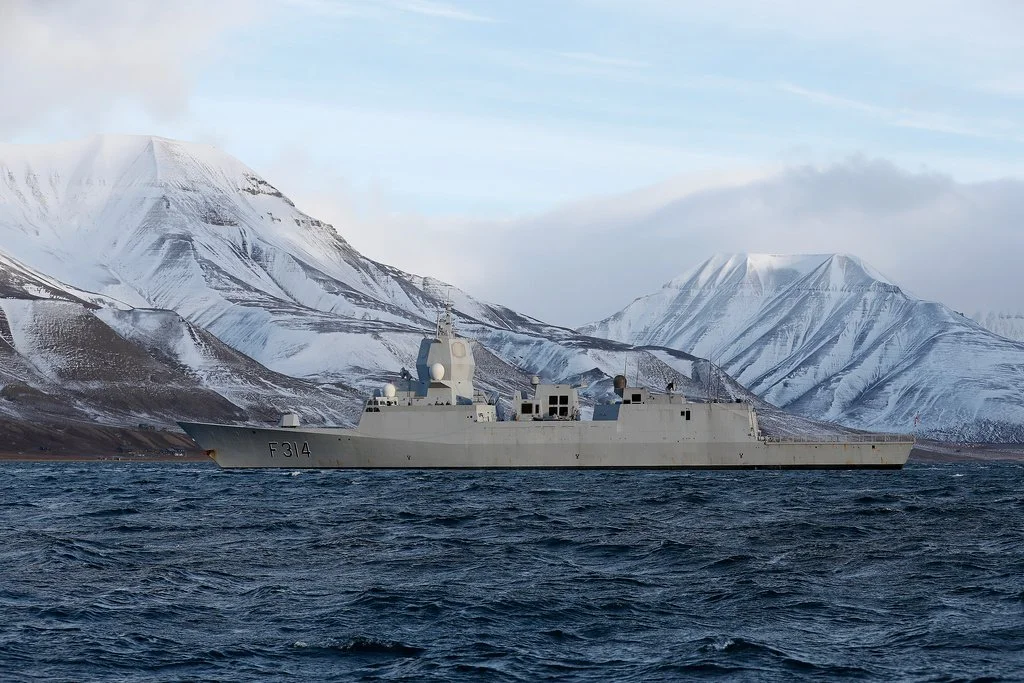Norway: Europe’s Only Petrostate
The Brage oil platform in the North Sea, 125km west of Bergen. Image: David Hecker
Until now, I had never visited Norway — so I have to admit that my idea of the country was a vague blend of its Scandinavian neighbours with more money and fjords. Over the past years, I didn’t meet many entrepreneurs or companies from Norway either but what did keep coming up was their enormous pension fund.
So my interest in Norway started after a recent visit to Abu Dhabi of all places. Getting a glimpse of how the discovery of oil and gas transformed the country from a desert to one of the wealthiest regions in a matter of decades was impressive. But what intrigued me even more was seeing how the country is deploying those resources today to invest in technology businesses globally and in attracting talent in AI, robotics or biotechnology to unlock new industries.
With the rest of the continent complaining about limited public finances, it left me wondering how Europe’s only petrostate had invested its own wealth over the same period — and what Norway was planning to do with it in the coming decades. So we’ll kick off the Tour with a long overdue visit to Norway. To prepare, we first need to understand its history and industrial context.
This article was co-authored by Max Samuel. Max is a General Partner at SNÖ Ventures, an early stage, Nordic-focused VC firm partnering with entrepreneurs embarking on uniquely challenging journeys. Before moving to Norway, Max worked closely with Peter Thiel at his investment firm, Thiel Capital, in San Francisco and Los Angeles. Before Thiel Capital, Max advised tech companies as an attorney at Wilson Sonsini in SF, and was an investment banker at Credit Suisse in NYC.
Special thanks to Tim Woodcock, Magne Uppman and Kristian Branaes for their suggestions.
Norway’s Unique Geography Shaped its Fortunes
At the northern edge of Europe, Norway occupies a remarkable position — both geographically and economically.
The Scandinavian Peninsula from above. Image: ESA
Its coastline stretches thousands of kilometres, punctuated by 50,000 islands and bordered by the Arctic Circle. Two-thirds of its landmass is mountainous, with deep fjords cutting into rugged terrain. Only 2.2% of its landmass is considered arable (similar to the desert nation of Yemen) leaving little room for land-based agriculture.
This unique geography has defined Norway’s history, shaped its economy, and placed it at the centre of some of the most important questions facing the world today: how to balance resource wealth with sustainability, and how to transition from an industrial economy to one that is green, resilient, and innovative.
With a population of just 5.5 million — less than half the size of the Paris metropolitan area — Norway is one of the most sparsely populated but wealthiest countries on Earth, with a GDP per capita of $103,000 (2024 PPP). This extraordinary wealth owes much to its natural resources, particularly oil and gas, which have driven its economy since the late 20th century. Norway’s success lies not just in its resource base, but in how it has managed those resources: through careful regulation, long-term planning, and a focus on turning today’s wealth into future resilience.
Now, Norway might be embarking on a new transformation, leveraging its expertise in energy and engineering to become a leader in renewables, climate technology, and Arctic innovation. If successful, it could provide a model for how resource-rich countries can adapt to a decarbonising world.
The Foundations of Modern Norway
The story of modern Norway began in 1905, when it gained full independence after centuries of forced union with Denmark and Sweden. At the time, it was a modest country economically, with a population reliant on fishing, farming, and timber. By the late 19th century, however, Norway had started to industrialise, aided by its abundant hydropower resources.
This early industrialisation laid the groundwork for the country’s later success. Norsk Hydro, established in 1905 and still operating today, pioneered methods for producing nitrogen fertiliser using hydropower, creating one of the country’s first globally competitive industries.
Innovations in telecommunications and Arctic navigation followed, driven by Norway’s geographic isolation and harsh climate (and perhaps by vestiges of the viking spirit). Norwegian explorers like Fridtjof Nansen and Roald Amundsen became international figures, using cutting-edge technology to traverse the Arctic and Antarctic and chart new territories. By the mid-20th century, Norway was modern, connected, and innovative — but not yet wealthy.
The airship Norge floating above Spitsbergen in 1926 before Roald Amundsen's expedition to the North Pole. Amundsen, Umberto Nobile (the pilot and designer of the airship), and Lincoln Ellsworth flew from Spitsbergen to Alaska, becoming the first people to definitely reach the North Pole. Image: Britannica
Balancing Independence and Alliances
Norway’s modern geopolitical strategy has been shaped by its experiences during the world wars and its unique position on the Arctic frontier. Despite declaring neutrality in both World War I and II, Norway’s strategic location made it a target. In 1940, Nazi Germany invaded (before the British could) and occupied the country, seeking control of its coastline and ports. The occupation lasted until 1945, leaving a deep imprint on Norway’s national consciousness.
In the aftermath, Norway reassessed its approach to security. It joined NATO as a founding member in 1949, recognising the importance of collective defence in an increasingly polarised world. Yet Norway has always maintained a careful balance. Sharing a border with the Soviet Union, now Russia, along the Kola Peninsula, home to a significant portion of Russia’s naval fleet and nuclear arsenal, Norway has refrained from hosting permanent NATO bases.
Such caution is not without reason. In 1995, a scientific Black Brant rocket launched from Norway was mistaken by Russia as a potential missile threat. The incident nearly escalated into a nuclear crisis.
Pyramiden is an abandoned Soviet mining settlement on Svalbard. Norway shares a border with Russia’s Kola Peninsula. Image: ABC News
Norway has twice (narrowly) rejected full membership in the European Union, with referendums in 1972 and 1994. Despite these decisions, Norway is deeply integrated into Europe’s economic and regulatory frameworks. Through its membership in the European Economic Area, Norway enjoys the benefits of free movement of goods, capital, services, and people across the bloc.
Norway complies with a substantial number of EU directives and participates in critical programs and agencies, including Europol, the European Defence Agency, and Frontex. However, this involvement comes without voting rights, leaving Norway to implement policies it has limited influence over — a trade-off that underscores its pragmatic approach to European integration.
Everything Changed When Oil & Gas Arrived
Norway's fortunes changed dramatically in the 1960s, when oil and gas were first discovered in its territorial waters.
Initial interest in the area was sparked by discoveries in other parts of Europe, particularly in the Dutch sector of the North Sea. American companies like Phillips Petroleum (now Conoco Philipps), were instrumental in pioneering early exploration by applying for drilling licences and conducting surveys. Their perseverance paid off in 1969 with the discovery of the Ekofisk field, one of the largest oil fields in the North Sea and among the first to prove commercially viable. This discovery encouraged further exploration and investment, both by international and Norwegian companies, and Ekofisk became fully operational by 1971.
The Ekofisk complex. Image: ConocoPhillips
The Norwegian government took a methodical, long-term approach to managing its newfound wealth. The government established Statoil (now Equinor) in 1972 to ensure that a significant share of oil revenues went into public hands. This policy of maintaining public ownership alongside private investment meant Norway experienced the opposite of the natural resource curse of other countries. From its founding Statoil has been an “instrument of the state” to collaborate with and to …
… acquire the international oil companies’ technology and know-how … All parts of the value chain were technology intensive. Success (for Statoil) would demand the continuous development of new methods and new equipment.
Thomassen, Eivind. (2022) Commerce and politics: Statoil and Equinor 1972-2001. Universitetsforlaget
This mission graduated in the late ‘80’s towards one where Statoil and its peers became the leaders in marine energy technology, and leveraged that advantage to outperform other operators within the North Sea.
With guidance from the Ministries of Energy and Industry, Statoil and its peers developed an ecosystem flywheel whereby third-party suppliers, usually at least partially Norwegian, developed and delivered technological solutions to fields, pipelines, cables, vessels, remote aviation, and refining infrastructure. As such, risk-sharing and optimization of comparative advantages has unlocked technology de-risking from within each project's development; instead of through some ex-ante proof of concept that needs to be delivered in advance of proper commercialization. This feature is perhaps singularly determinative as to why the Anglo-Saxon and other regional oil and gas sectors have stagnated where Norway’s has thrived for 5 decades.
In the wake of European sanctions on Russia for their full scale invasion of Ukraine, Norwegian gas was critical to maintain energy security in Europe — and the country benefitted from record prices.
In 2023, Norway generated about NOK 829 billion (EUR 70 billion) in revenue from oil and gas – which is substantially higher than historical averages but about EUR 50 billion less than during high oil prices in 2022. Globally, Norway is now the 5th largest oil and the 3rd largest natural gas exporter. By some estimates, Norway has produced and sold about half of its known reserves.
This of course puts Norway into a conflicting situation because at the same time, Norway has made commitments to urgently act against climate change and sources almost all of its domestic energy from renewable sources.
The World’s Largest Equity Owner
Where did all of the oil money go? Since the 1990s, much of it went towards building the Government Pension Fund Global, one of the largest sovereign wealth funds in the world that today is worth more than $1.7 trillion.
Unlike other resource rich countries, Norway uses almost none of its oil and gas domestically — it is powered almost entirely by renewables. The fund is a vehicle for Norway to trade its enormous energy surplus into global equities and bonds.
Run currently by CEO Nicolai Tangen, a former hedge fund manager, the fund is the world’s largest single owner of equities holding 1.5% of all listed companies. The portfolio is spread between equities (72%), bonds (26%), real estate (1.7%) and renewable energy infrastructure (0.1%). In typical Scandinavian transparency, there’s a live ticker on its websites for citizens to keep track of its current market value and every single investment.
Nicolai Tangen. Image: Norges
Speaking at a recent event, Tangen emphasised the fund’s pivotal role in securing Norway’s long-term prosperity: more than half of the fund’s value now comes from investment returns rather than oil revenues. As Tangen puts it, it’s like Norway found oil twice — once in the continental shelf, once in financial markets.
Because of its government-imposed mandate, the fund cannot, however, invest in private companies or venture capital funds — which means both Norwegian and European startups do not benefit from this pool of capital. It’s a missed opportunity at a time when European entrepreneurs have proven their ambition and ability to build global tech companies. Investing even a fraction of the fund, Norway could become the European champion of innovation and would have access to the best venture capital firms — not just here but globally. There is an ongoing debate about adapting the fund’s mandate but so far, it hasn’t changed.
It is worth noting that Norway does have other public programs and vehicles which are designed to fund and support Norwegian startups and VCs, but these have extremely limited resources compared to the Oil Fund, and have been recently subjected to severe budget cuts.
World-leading Offshore Engineering
Norway’s oil and gas sector has decades of expertise in constructing and managing complex offshore infrastructure.
One of the most remarkable achievements of Norwegian engineering is the Troll A platform, a towering natural gas facility off the west coast of Norway. Completed in 1995, Troll A was not assembled on site but constructed in its entirety before being towed across the sea for seven days to its final location. At nearly 500 meters tall and weighing 1.2 million tonnes, it remains the largest and heaviest object ever moved by humans.
Troll A is towed out to the field. Image: Jan Ove Moen/Equinor
Once shallower resources had been in production or depleted, Norwegian companies had to innovate in building floating production, storage and offloading (FPSO) platforms to operate in deep waters.
FPSO infrastructure on the Skarv field. Image: Orlen
Derivatives of these innovations can be seen in other areas of floating infrastructure built in Norway: the country’s deep expertise in offshore oil platforms is being applied to floating wind turbines, which can operate in deeper waters than traditional fixed installations. In very Norwegian fashion, the first floating wind park, Hywind Tampen, was built by Equinor to supply two of its major oil platforms with clean energy.
The Hywind Tampen floating windpark supplies the Snorre and Gullfaks platforms with energy. Image: Equinor
Norway also builds floating transportation infrastructure to conquer its unique terrain: the Bjørnafjorden south of Bergen is over 500 metres deep. The Norwegian Public Roads Administration (Statens vegvesen) is building a 5 km floating bridge to cut transport times in half. It’s not Norway’s first floating bridge, but once completed it will be the world’s longest one.
The design for the planned Bjørnafjorden bridge. Image: Statens Vegvesen
It’s not their only gigantic project that is underway: Statens vegvesen are also planning the equally impressive Rogfast project, the world’s longest and deepest under sea road tunnel at close to 27 km length and up to 380 metres depth.
The design for the 27km undersea tunnel through Boknafjord. Image: Statens Vegvesen
These projects illustrate that Norway is uniquely poised to take a globally leading role in technological and industrial innovation. With a rich legacy rooted in oil exploration and industrial engineering and the unparalleled resources of its sovereign wealth fund, Norway has an opportunity to shape the future of global innovation.
Navigating Tensions and Opportunities in the Arctic
Norway’s territory on Svalbard positions it as a key player in the Arctic. Image: Britannica
With its long coastline and territory on Svalbard, Norway is strategically located adjacent to sea lanes and air routes in the North Atlantic and has access to Arctic regions. The Svalbard archipelago has become a focal point for Arctic diplomacy, research, and even space exploration.
NATO’s Arctic Outpost
As climate change accelerates the melting of polar ice, new shipping routes like the Northern Sea Route are becoming viable, offering faster connections between Europe and Asia.
Norway’s ports and naval infrastructure, including those in Tromsø and Longyearbyen, position it as a critical hub for Arctic logistics.
Map showing the Northern Sea Route, the Northwest Passage and the Transpolar Sea Route. Image: The Arctic Institute
One area of concern in the region is the security of critical infrastructure, particularly subsea cables. These cables are the backbone of global communication and data transfer, connecting countries and continents, but their remote Arctic locations make them vulnerable to sabotage. Recent damage to subsea cables in the Baltic Sea are likely incidents of sabotage. Norway has already seen increased Russian activity near its undersea infrastructure and suspected incidents of sabotage against their own telecommunication cables, raising fears of intentional disruptions in the event of heightened conflict.
Norwegian Navy Frigate KNM Thor Heyerdahl on its annual visit to Svalbard in 2022. Image: Forsvaret
With Finland and Sweden’s recent accession to NATO, eight of the nine Arctic states are now members of the alliance, further solidifying Western presence in the region. For Russia, which remains the sole non-NATO Arctic power, control over natural resources and emerging shipping routes like the Northern Sea Route is a strategic priority. These developments set the stage for the Arctic to become a focal point of geopolitical tension.
The Nordic Response 24 military exercise, part of the larger NATO exercise Steadfast Defender, near Sorstraumen. Image: Jonathan Nackstrand/AFP via Getty Images
Accessing Polar Orbits
The Svalbard Satellite Station (SvalSat) is the world's largest commercial satellite ground station, uniquely positioned to support data acquisition and tracking for polar-orbiting satellites. Its Arctic location offers a distinct advantage: near-continuous contact with satellites in polar orbits. This capability is essential for weather forecasting, environmental monitoring, and climate research, all of which depend on the uninterrupted flow of satellite data. Strategically, SvalSat is more than a scientific asset — it is a critical piece of infrastructure for Norway and Europe. Supporting both civil and military applications, it plays a key role in Arctic surveillance and Earth observation.
The world's largest commercial satellite ground station is located on a plateau overlooking Longyearbyen, Svalbard. Image: ABC News, Matt Davis
Protecting the World’s Genetic Plant Diversity
Svalbard is also home to one of the world’s most forward-looking initiatives: the Global Seed Vault. Sometimes called the “Doomsday Vault,” it provides free, long-term storage for seed duplicates, safeguarding genetic plant diversity against loss from natural or human-made disasters. The vault, buried deep within the permafrost, is designed to withstand earthquakes, climate change, and other potential threats, ensuring a backup for the world’s most vital crops. Since its opening in 2008, the Global Seed Vault has grown to hold over one million seed varieties from nearly every country on Earth, making it a cornerstone of global food security.
The entry to the Global Seed Vault on Svalbard. Image: Svalbard Global Seed Vault
There’s much more for us to explore, but for now we hope you enjoyed reading this first deep dive into Norway’s unique industrial context.
Norway’s industrial and economic transformation in the past decades has been extremely impressive. Given its unique position in the global energy industry, its massive sovereign wealth fund and its reach into the Arctic, this small nation will most likely continue to play an outsized role in years to come.
Next time, we will explore how Norway’s oil industry has shaped a uniquely technical talent pool and a legacy of innovation in hardware engineering that can now be leveraged in emerging industries.
In the coming weeks, we’ll speak with some of the technical leaders behind Norway’s most advanced engineering projects to explore what others can learn from their success — and we’ll meet some of the country’s most ambitious entrepreneurs to get a sense for what the next decades might bring.
